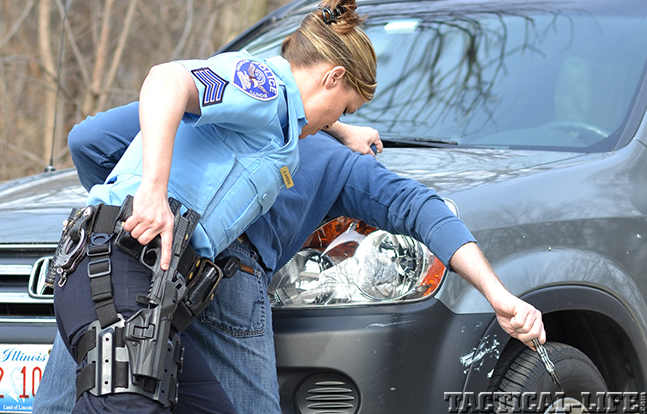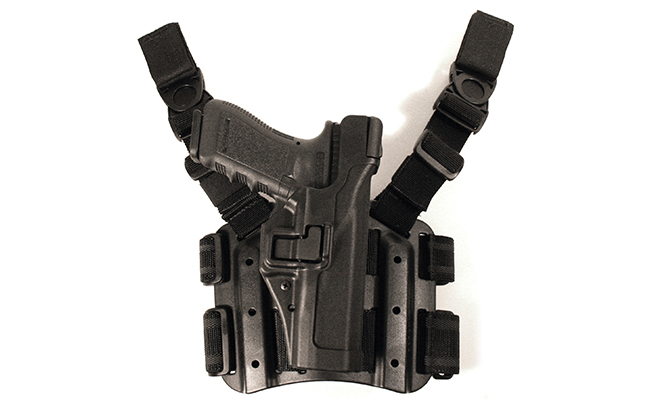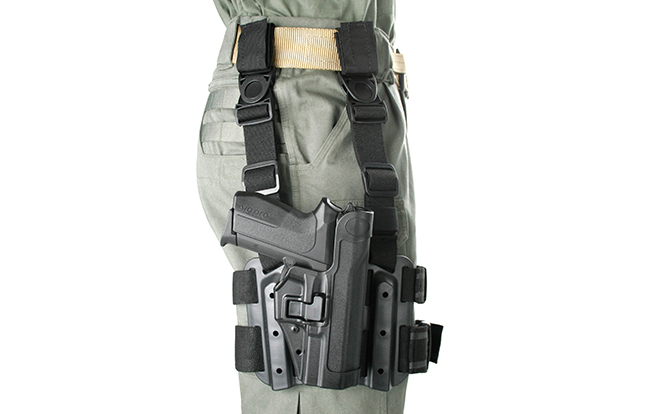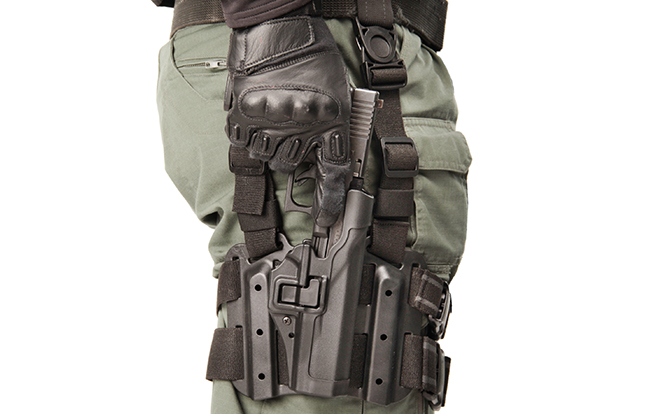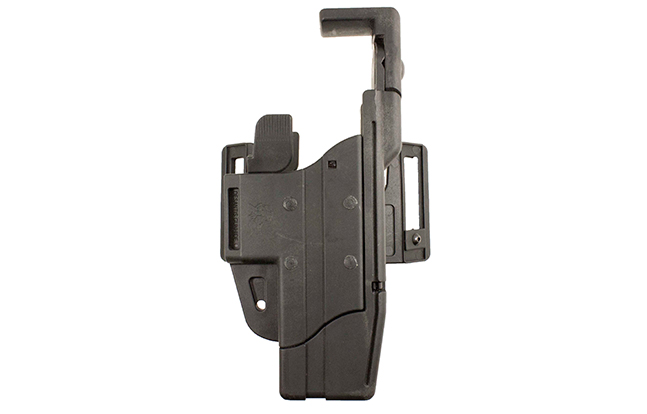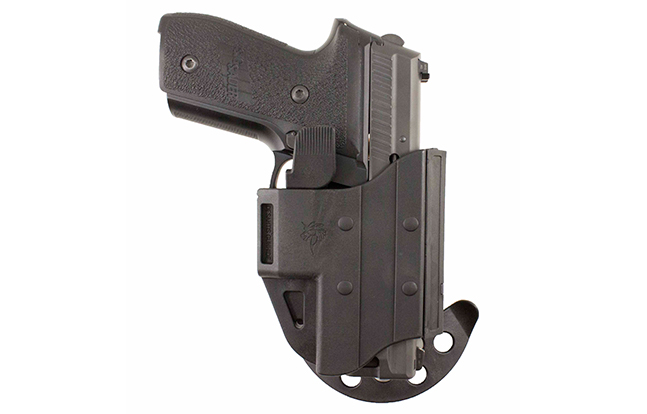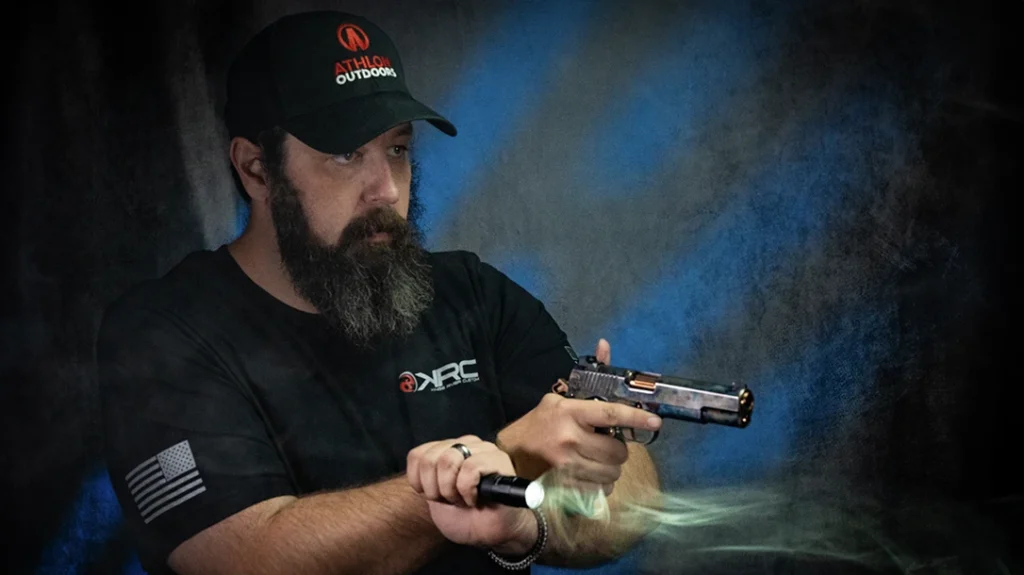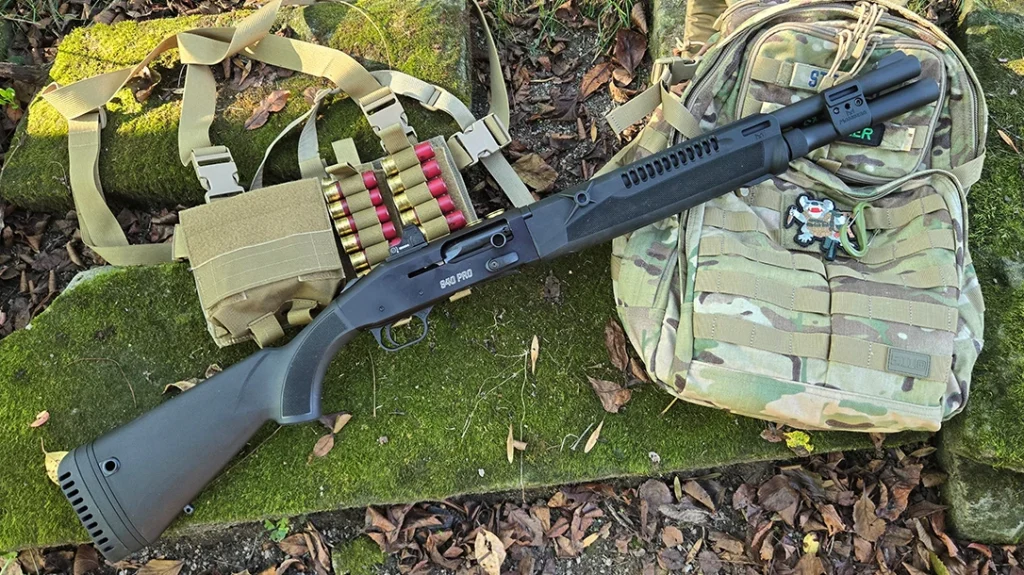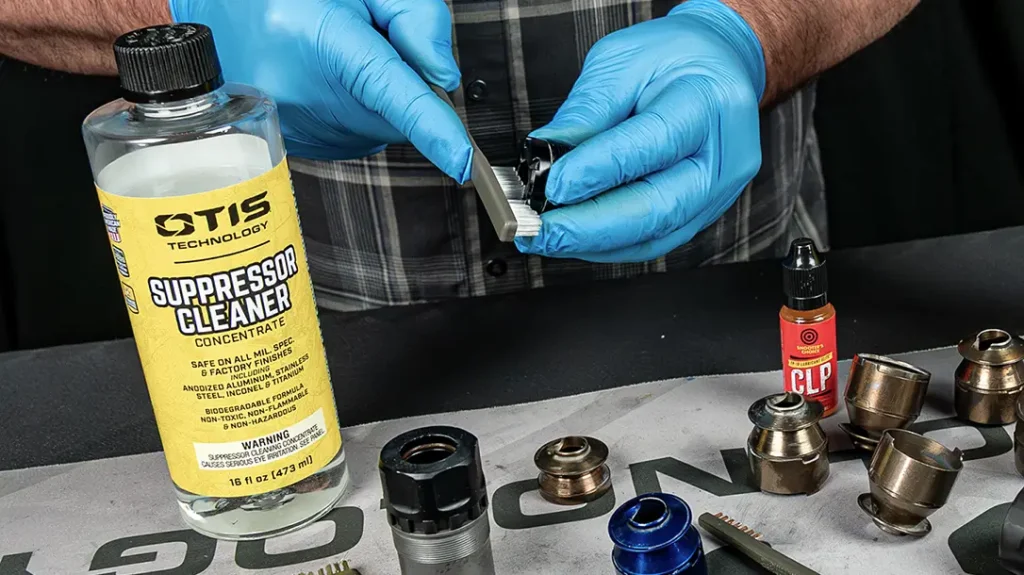Story written by Sara Ahrens:
In an attempt to professionalize police departments, many police administrators develop policies and make decisions that have more to do with enhancing the public’s perception of its officers and cost than addressing the officers’ needs.
Policies on uniform and equipment standards may seem trivial to civilians, but to a sworn officer, they are critical. They often spell out authorized equipment. Some agencies ban militaristic gear for fear of projecting an image of force. This image is contrary to the community-oriented policing platforms for which they advocate. In a perfect world, the job, conditions and an individual officer’s needs would dictate these decisions because they have an undeniable impact on LEO safety, health and morale.
Advertisement — Continue Reading Below
Policies that administrators should revisit are those that outline authorized holsters. Typically, vest-mounted and thigh rig holsters have been reserved for “tactical” officers, but these holster options may have real applications for the line officer. My first experience considering other options was when I was issued a thigh rig as a SWAT operator.
Optimal Positioning
Advertisement — Continue Reading Below
When I first donned a thigh rig holster, it was a significant improvement over every holster I had ever worn on my waist. I immediately noticed that my strong-side draw was improved. Females typically have shorter torsos than males, so the combination of holster placement and barrel length forces some female officers to cant their bodies to clear leather. Male firearms instructors recognize this dilemma. They’ve recommended to me and other females to select firearms with shorter barrel lengths and low-rise holsters. I tried this setup, but later invested in a firearm and holster that provided more comfort. Canting my body was a comparatively smaller order!
I suspect that little explanation is necessary to explain why shooting a short-barreled .40-caliber firearm is less enjoyable than shooting one with a longer barrel. What’s less obvious is the discomfort endured wearing a poorly placed holster for eight to 12 hours a day. Wearing a low-rise holster can be downright painful! Sitting in my squad car became an excruciating experience because the holster would dig into my hip. I had perpetual bruising on my hip, and I found myself wrapping my fingers between the holster and my hip while on calls. I did this to alleviate the pressure point and to create a cushion. After several hours, I would to experience pain and burning in my hip, which resurfaces to this day.
This was unsafe and unhealthy, so I got rid of it. I switched to a mid-rise holster, which was tolerable. When exterior vest covers became authorized, the vest interfered with the mid-rise holster. I sacrificed the comfort of an exterior vest cover to avoid the discomfort of a low-rise holster.
Advertisement — Continue Reading Below
Back issues are common health-related problems for police officers. The usual cause is heavy, rigid duty belts. Reducing the weight of the duty belt and distributing it evenly is one prevention method. Firearms and ammunition account for much of that weight. Using a thigh rig distributed the weight between my leg and waist, providing me with immediate lower back relief.
Thigh rigs also offer smaller officers valuable real estate on their belts. A typical line officer may carry 10 or more items on their duty belt. Positioning these tools so they’re both accessible and comfortable is challenging. Smaller officers sometimes have to make a choice about what equipment to carry on their belt. Thigh rigs provide needed space and may prevent injury and time off by properly positioning equipment away from the spine.
I recently received three thigh rig holsters available to law enforcement officers: Safariland’s Self-Locking System (SLS), the BlackHawk Level III SERPA and the DeSantis Tap Out.
Advertisement — Continue Reading Below
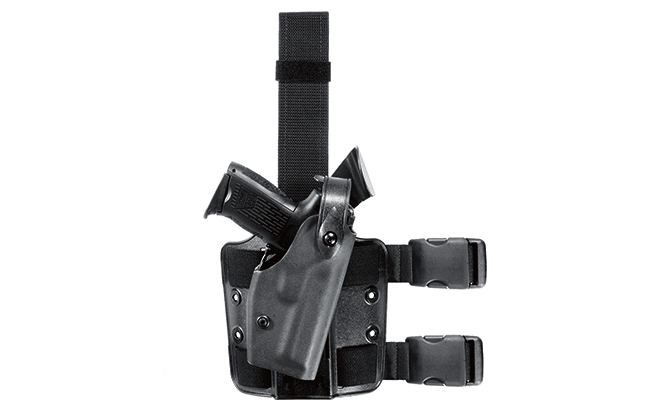
Safariland is a very common brand in law enforcement. The company offers holsters for a very large selection of firearms manufacturers and models. Its holsters also accommodate weapon-mounted lights from a variety of manufacturers, not just its own. Safariland’s holster line comes in a variety of finishes, which accommodates restrictive policies.
Safariland’s SLS tactical holster is comfortable, and Safariland’s Level III retention device, for me, is the best of all I’ve tried. It requires the user to push the hood down and rotate it forward simultaneously. The hood then requires two hands to lock back into positions. This prevents LEOs from being locked out of the holster when they need to quickly reholster and go hands on. When reholstered, the two remaining levels of retention (the Auto Lock and detent screw) will securely retain the firearm. This rig attaches to the duty belt with a single strap equipped with an adjustable hook-and-loop fastener.
Advertisement — Continue Reading Below
BlackHawk sent me its Level III SERPA tactical holster for review. The first thing I noticed was its Y-harness suspension system, which improved weight distribution and helped keep the rig in the proper position. This rig features quick-disconnect swivel buttons that allow the holster to be removed quickly. The swivel buttons are attached to the duty belt with hook-and-loop fasteners.
The Level III SERPA holster has a thumb-activated pivot guard. If this is disengaged, the firearm is still retained by the SERPA Auto Lock, however, which is only deactivated when the retention button is depressed. The Level III SERPA tactical holster is available for several models of firearms. BlackHawk also offers a holster for firearms equipped with a BlackHawk weapon-mounted light.
Advertisement — Continue Reading Below
New for 2014 is the Tap Out holster system from DeSantis. This is a versatile system designed to allow the user to quickly change the method of carry without the use of tools. One method of carry for the system is as a thigh rig. Other methods of carry for this system include as a waist-worn duty holster, a chest rig or a concealment holster. In addition, the cant of the holster can be adjusted with an included Allen key, and the holster system is ambidextrous. Currently, Tap Out holsters are available for three manufacturers: Glock, S&W and Sig.
The holster’s retention is released by simultaneously pressing two finger breaks on each side of the holster. Like BlackHawk, DeSantis’ thigh rig attaches to the duty belt at two points, which aids in keeping the holster in position. The hardware DeSantis uses to attach the thigh rig to the duty belt is an improvement over the hook-and-loop fasteners. Instead, the Tap Out’s is made of a tough, molded polymer that swivels. Its thigh bands, however, are not made out of elastic. This made achieving a comfortable and snug fit difficult for me. Due to the dynamic nature of law enforcement, I would recommend elastic.
Advertisement — Continue Reading Below
Changing Policies
Thigh rig holsters are often overlooked and under-considered for line officer use because of their association with tactical units. They can provide a variety of benefits for line officers, especially females. These benefits may aid in officer safety, improved health and morale. When uniform and equipment decisions are based on the individual officer’s physical characteristics and the tasks they perform, agencies sometimes discover that professionalism is the byproduct.
Advertisement — Continue Reading Below
